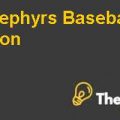
REAL ESTATE IN THE MIXED-ASSET PORTFOLIO: THE QUESTION OF PORTFOLIO CONSISTENCY
INTRODUCTION
The real estate market was growing because the equity market of UK was not performing well enough for investors to invest and get potential return. This attracted investors to invest into the real estate market in the UK, which was composed of mixed assets portfolio. With respect to this situation, investors might question that whether this growth of the real estate market remain competitive against other assets in the long run or not? It was observed during the 1970s that returns were higher than 1980s and it was also increasing the trend of inflation. Therefore, it was uncertain to get higher returns against the equity market portfolios with respect to time and this question was still unanswered. In short, the consistency in the generation of higher returns by the real estate using mixed asset portfolio in short-term and long term investment was not evident.
Consistency means the capability of an asset to be allocated positively in a well-organized portfolio with various risk appetite. This is a desirable consistency level for any given investment, but it is on the specified significance level as far as the real estate investment is concerned and normally the investment made in the asset class is for long term period that made this investment non-liquid.
To address the investor’s concern for consistency, mixed asset portfolio of real estate is allocated and calculated over the previous holdings in the past and the data last 35 years is used that ranges from 1980 to 2013. The real estate was included in the portfolio and examined by comparing the risk associated with this efficient portfolio against those portfolios that didn’t include the real estate in it and had the same level of risk and return with or without addition of the property asset. By doing so, it was found that the general perception was that real estate was reasonably consistent to provide the maximum returns with low risks associated with this mixed asset portfolio.
On the other hand, return varies with the time period as analyzed in the excel sheet. The example used in the excel sheet illustrates that adding the real estate into the portfolio can provide the benefit where the risk associated to a portfolio has low return.
The efficient frontier benefits the investor when he holds for a longer period of time because when the frontier shifts so the investor moves along with it. At the upper side of the efficient frontier, higher return will be generated by adding the real estate asset into the portfolio and at the lower side of the efficient frontier, lower return will be generated by adding the risk free assets into the portfolio.
EVALUATION
The evaluation is made on the basis of the following:
Efficient Frontier of 3 assets Portfolio:
To analyze the efficient frontier with respect to the real estate over a varying time period, calculation has been made for minimizing the risk associated with the portfolio at different level of return and in that portfolio, risks were defined at a certain level. In this evalaution, the risk is the standard deviation associated with the level of return that a portfolio generates. In short, a portfolio is on efficient frontier when it has the higher expected returns with the given risks associated with it and a portfolio is on efficient frontier when the portfolio is at the lowest possible level of risks with certain level of return. It is also observed that the efficient frontier is always in curve shape, which represents that the investment must be made into diversified portfolio where different classes of assets are used, and by investing in diversified portfolio, investors reduce its risk associated with a particular portfolio.
|
Average Return |
Risk |
|
9.73% |
9.67% |
|
9.73% |
9.67% |
|
13.82% |
15.81% |
|
10.62% |
11.38% |
|
7.67% |
4.77% |
De-smoothing
De-smoothing is the artificial process where the direct property risk is adjusted with its associated return. In this case, the de-smoothing is done by optimizing the risks related to the real estate return and by comparing it to the property indices. The co-efficient is defined as the level of risks that an investor is taking on the given required return and in the case the de-smoothing co-efficient is zero, which means that the property’s de-smoothed returns are taking the similar risks as it is given in the property index and that is the reason behind the similar returns of the property index and property de-smoothed returns. (Please refer Exhibit 1.)
The constraints of the de-smoothing is that when considering the real estate with the market based securities, optimizer tool is used for artificially adjusting the risks. This tool overweights those assets that have higher estimation in terms of return with lower positive or negative correlation and small variance. This ....................
This is just a sample partial case solution. Please place the order on the website to order your own originally done case solution.













